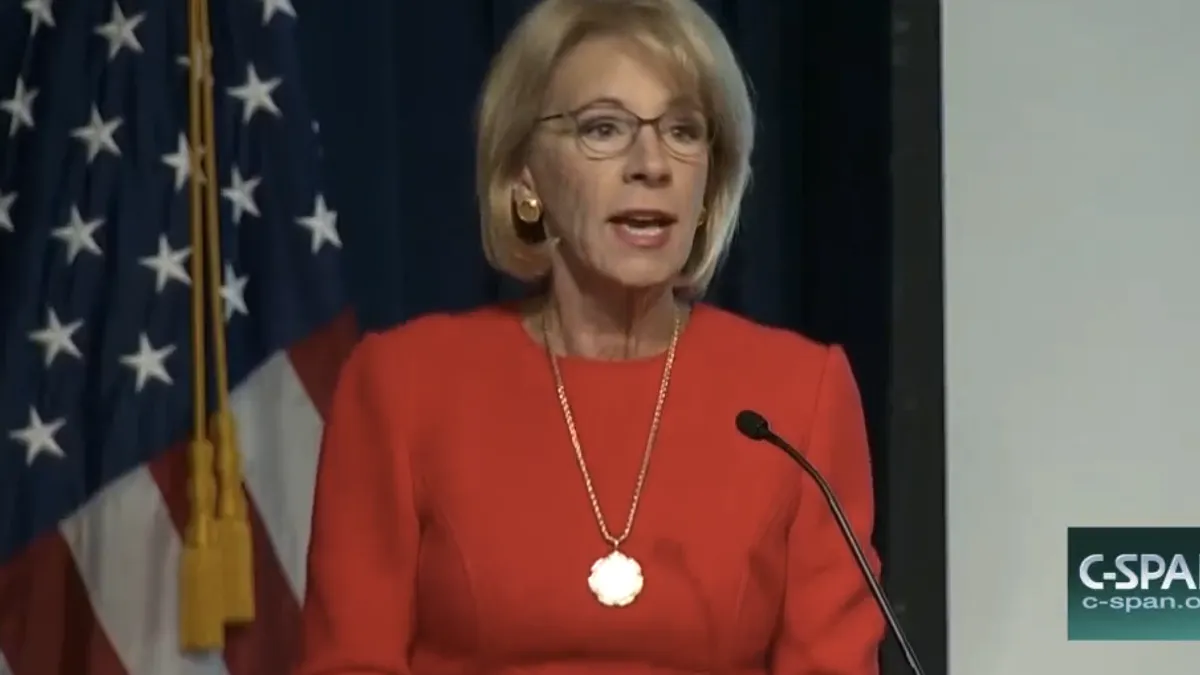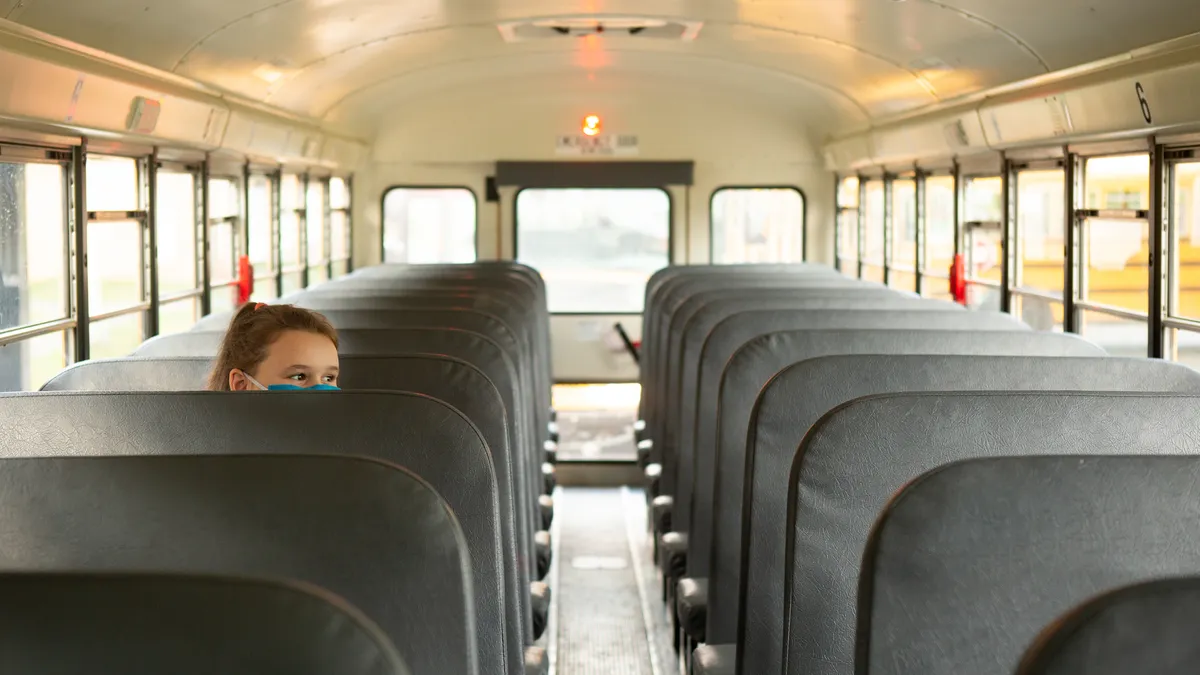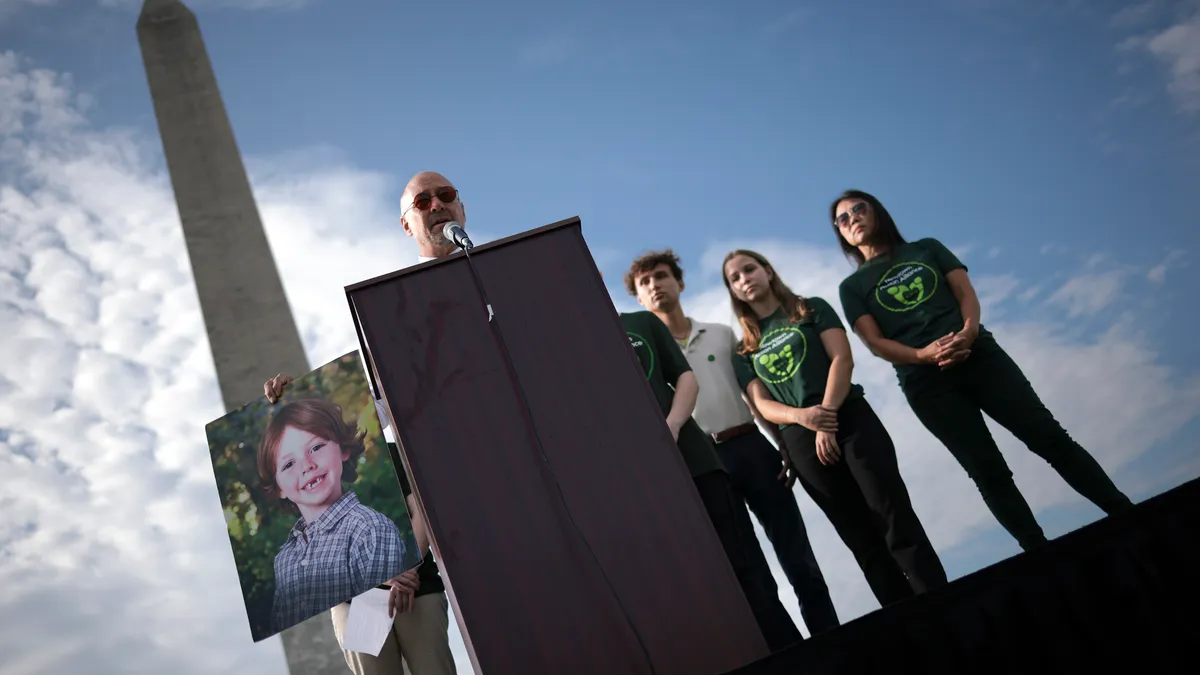Districts with personalized learning models, charter schools, a homeschooling advocate and independent schools accepting vouchers for students from low-income families were featured Tuesday during U.S. Secretary of Education Betsy DeVos’ Rethink School Summit.
Designed to identify innovation in education, the three-hour roundtable discussion and presentations followed the same theme as the secretary’s tour in which she visited mostly non-district schools and higher education institutions in six states over the past few months.
“There’s still not enough innovation,” she said Tuesday, continuing her familiar focus on school choice and schools or networks working outside the traditional public system. “The reality is there are a number of challenges and opportunities facing American students, and Washington, DC, does not have all the answers.”
The Lindsay Unified School District (LUSD) in California’s San Joaquin Valley and the Mooresville Graded School District (MGSD) in North Carolina — both of which are using technology to personalize learning — were featured in the first session on “Attaining Each Child’s Unique Potential.”
LUSD Superintendent Thomas Rooney talked about “grouping and regrouping learners” based on where they are in the learning process, not their age. And MGSD Superintendent Stephen Mauney said moving to a one-to-one device model was a way to engage students and give them real-world experiences. Both leaders shared data on increasing graduation rates and said they’ve seen collaboration between teachers increase.
“The shift toward customized learning or personalized learning is inevitable,” Rooney said in later comments. “The reality is that our educational system needs to be constantly evolving in response to the future conditions of our country and our world.”
DeVos held the first of the two summits last week. Focusing on higher education, that event brought together leaders from a diverse mix of institutions and focused on topics such as how to adapt to the needs of employers and how to get employers to recognize certifications and credentials other than a four-year degree.
The education secretary has also been calling for a greater emphasis on apprenticeship programs, saying that career and technical education programs have been stigmatized as less important than traditional routes to a degree.
At Tuesday’s event, none of the presenters invited to speak for the “Shifting the Paradigm” portion of the morning represented public schools. Carol Becker, a home school parent and a consultant with the Home School Legal Defense Association, said there are now roughly two million children being home schooled in the U.S. and that growth is also occurring in many other countries. She suggested that most families don’t have access to the types of successful educational models featured at the summit. “When we are dealing with most public schools, we are not dealing with the people in this room,” she said.
The other two speakers represented parochial schools — Elizabeth Goettl, president and CEO of the Cristo Rey Network of 32 Catholic schools serving low-income students, and Andrew Hart, CEO of Oaks Academy, a Christian school that is growing more ethnically diverse by accepting vouchers for low-income students. DeVos has mentioned the school, which Hart says has been replicated three times and is considering future growth, as a way to achieve more integration.
The final presentations on “Customizing Learning” featured charter school leaders, such as Diane Tavenner, CEO of Summit Public Schools, a high-performing charter network that is now sharing its learning platform and approach with over 330 schools nationwide, 76% of which are traditional district schools.
Changing graduation requirements to focus on eight domains of learning, providing one-to-one mentoring, and creating a teacher residency program that prepares educators to work in personalized learning environments are a few aspects of the Summit model.
“We work very hard to be at that intersection of theory and research and practice,” Tavenner said. While a few of the speakers referenced the importance of improving teacher preparation programs so that teachers are able to work more effectively in innovative models, which Summit is now trying to do, Tavenner added in her later comments that teachers often “don’t have the support and the resources that they need to do a job that is impossible.” She said leaders should “invest heavily” in figuring out the roles of teachers in today’s schools.
Other speakers focused on collaboration with the business community to give students access to industry experts, but also to support the development of skills in the existing workforce. Travis Works, the executive director of Cornville Regional Charter School in central Maine, said for example that if there are 15 slots in a class in which students are learning how to build a 3-D printer from scratch and only 10 slots are filled, the school will invite employees from local businesses to participate, allowing for “multigenerational learners.”
In his questions for the participants, Jason Botel, principal deputy assistant secretary at the Department of Education, asked about the role of federal and state governments in allowing innovation. One speaker talked about the challenge of recruiting business people to teach because they bring industry expertise, but then running the risk of not being “a 100% certified school.” He said the federal government could put some money into training teachers on areas such as trades, STEM, computer science and other areas "relevant to students."
Nicole Assisi, CEO of Thrive Public Schools in San Diego, emphasized social-emotional learning and creating empathy among students, which led some of the participants to reference opportunities in the Every Student Succeeds Act to focus more broadly on student growth in multiple areas.
“We cannot assume that every child is the same,” Assisi said. “We really are now in a place where we can change that. There is an opportunity to no longer force kids to fit into this same mold.”
There was some discussion on Twitter during the event, with most tweets highlighting comments from the speakers. A few people commented on Facebook, however, that teachers were not at all represented and that the event's timing in the middle of a school day "was a gross oversight of teachers everywhere."





















